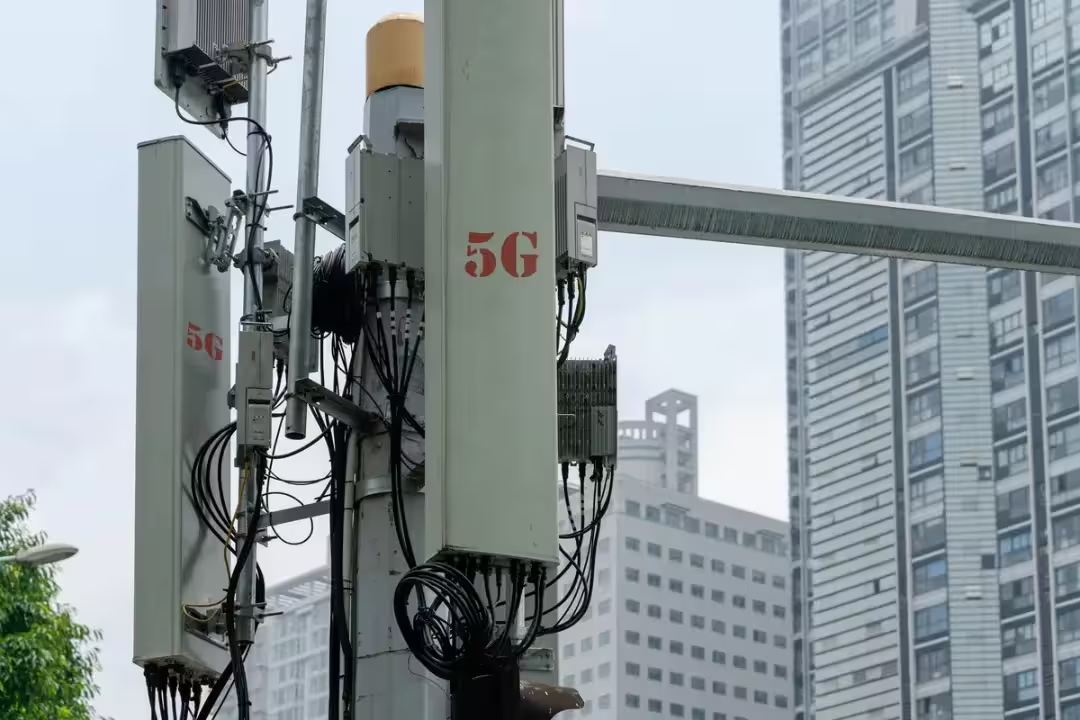6 Minutes
The Final Word on 5G Safety: Comprehensive Study Proves No Harm from 5G Waves
For years, conspiracy theories and misinformation have fueled concerns about the impact of 5G technology on human health. With the global rollout of 5G networks accelerating, questions have persisted about whether the high-frequency radio waves emitted by 5G towers could pose a risk to our bodies. Now, a groundbreaking and meticulously controlled study from Constructor University in Germany delivers the most definitive answers yet: 5G signals, even at intensities far higher than real-world exposures, have no harmful effects on human cells.
How the 5G Health Myth Was Tested
In response to widespread fears and rumors—ranging from claims that 5G causes cancer to the bizarre idea that it could turn people into zombies—scientists designed one of the most detailed investigations to date. Human skin cells were exposed to extremely high doses of electromagnetic frequencies, at levels ten times above international safety standards and much greater than those produced by typical 5G cell towers.
The researchers subjected two key cell types found in human skin—keratinocytes (outer skin cells) and fibroblasts (which form connective tissue)—to electromagnetic waves at 27GHz and 40.5GHz, frequencies that are even higher than most deployed 5G network frequencies. These cells were then monitored under two exposure periods: 2 hours and 48 hours, simulating both short-term and extended contact with 5G signals.
Advanced Analysis Techniques Leave No Stone Unturned
To reveal any possible changes or damage, the researchers employed cutting-edge genomic techniques, including full RNA sequencing to monitor gene activity and DNA methylation array analysis, which detects changes in gene regulation. This dual approach allowed for the detection of even subtle biological responses at the genetic and epigenetic levels.
Previous studies that suggested possible harm from radiofrequency exposure were often criticized for lacking blinded setups, inadequate temperature control, or using flawed statistical methods. By contrast, this study included thorough controls, double-blind design, and strictly regulated temperature conditions to rule out confounding variables—setting a new gold standard for 5G health research.

5G Myths vs. Scientific Reality
One enduring concern is whether 5G's higher frequencies could produce ionizing radiation (the type known to cause cancer), but physics tells a different story. 5G, like previous generations of mobile communication, uses non-ionizing radio waves which lack the energy to alter atomic structures or cause mutations in DNA. As technology demand grows, and the need for faster connections, lower latency, and expansive capacity increases, the scrutiny on perceived health impacts continues—making thorough, unbiased research essential.
During the COVID-19 pandemic, conspiracy theories linking 5G technology to the spread of viruses or adverse health outcomes gained traction online. Despite repeated assurances from global agencies like the World Health Organization (WHO) and National Toxicology Program (NTP), public skepticism lingered, often fueled by sensational claims or poorly-conducted studies.
Experimental Setup and Controls
To ensure credibility, the German team devised a meticulous experimental framework. Alongside the main test groups, two control groups were included: one exposed to ultraviolet (UV) light (a known risk factor for cellular damage) and another undergoing a sham exposure, simulating all experimental conditions without any electromagnetic exposure. Only the UV-exposed cells showed expected changes, whereas the sham and 5G-exposed cells remained unaffected, reinforcing the validity of the results.
Moreover, randomized statistical methods were used where exposure data labels were shuffled hundreds of times, making certain that any detected genetic changes were not products of chance. The outcome remained consistent: there were no meaningful differences between cells exposed to 5G or high-frequency waves and those that were not.
Key Findings: No Biological Hazards from 5G Exposure
The study's findings are unequivocal. As reported by IFLScience—an authority in scientific communication—exposing human skin cells to 5G and even higher frequencies, at power densities vastly exceeding actual environmental exposures, did not trigger significant genetic, epigenetic, or cellular changes. Gene expression and DNA methylation patterns in the 5G-exposed cells showed no statistically significant deviation, even under worst-case, prolonged exposure scenarios.
The researchers highlighted that only cells subjected to ultraviolet light—well recognized as harmful—showed predictable genetic alterations, whereas 5G and higher frequency EMFs had no such impact. This precision and transparency in the research design, alongside robust statistical analysis, set this study apart as the most thorough exploration of 5G’s biological safety to date.
5G Technology: Advantages and Global Impact
5G technology marks a significant leap in mobile connectivity, offering dramatically increased data speeds, ultra-low latency, and the capacity to connect vast numbers of devices seamlessly. This next-generation network underpins innovations like autonomous vehicles, smart cities, telemedicine, and Internet of Things (IoT) solutions—essential foundations for the digital age and Industry 4.0.
Beyond its technical promise, 5G’s market relevance is undeniable. Telecommunications giants and governments worldwide are investing billions to deploy dense 5G infrastructure, driving economic growth and competitive advantage in the digital economy. The assurance that 5G is safe, based on rigorous independent research, clears the path for widespread adoption and public confidence.
Comparisons with Previous Technologies
While 2G, 3G, and 4G networks have faced their own waves of scrutiny, none offered the bandwidth or application potential of 5G. The new standard's unique use of millimeter waves provides faster speeds but initially sparked new health fears. This definitive research, however, demonstrates that—like its predecessors—5G presents no special danger to human cells under any condition tested.
Use Cases and Future Prospects
With lingering doubts now scientifically addressed, 5G networks can confidently support critical infrastructure, real-time communication for emergency services, futuristic smart appliances, augmented and virtual reality applications, and far more. Consumers, policymakers, and enterprises alike can now focus on the benefits and opportunities 5G brings, without being sidetracked by unfounded worries over potential health impacts.
Conclusion: Scientific Clarity Conquers Conspiracy
The authors of the study, responding to persistent media debate and sporadic, inconclusive prior studies, hope their work will finally put to rest the persistent speculation about 5G’s biological effects. "The data clearly demonstrate that in human skin cells, even under the most pessimistic scenarios, there is no significant change in gene expression or DNA methylation following exposure to selected electromagnetic waves," the researchers conclude. This landmark research offers a powerful, evidence-based response to myths, misunderstandings, and conspiracy theories that have long clouded the rollout of 5G networks.
As the world races toward a hyper-connected future powered by next-gen telecommunications, science once again affirms: 5G is not just a technological revolution—it is a safe one.
Source: academic.oup



Comments